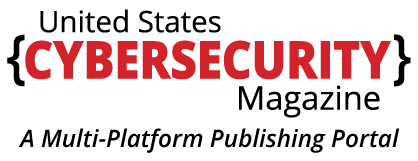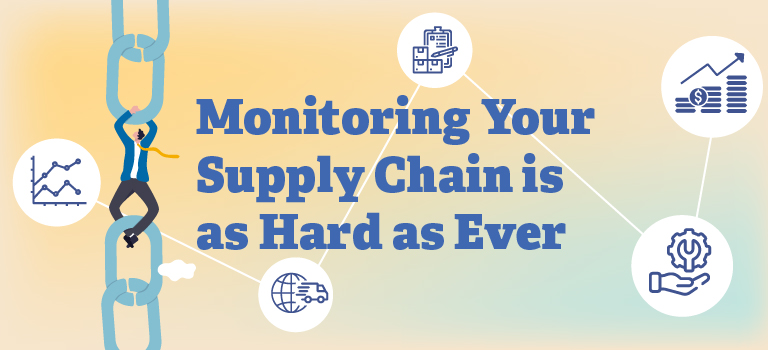In today’s companies, the complex technology stack and a sprawling supply chain has become one of the most challenging tasks for organizations to manage. For CISOs and other security and compliance staff, the responsibility extends far beyond their internal networks and endpoints. It involves managing risk across dozens, if not hundreds, of external partners, vendors, and service providers—all of whom play vital roles in delivering products and services. This article explores the complexities of modern supply chain security, evaluates the available approaches for monitoring third-party risk, and outlines a pragmatic strategy that combines a hybrid approach to supply chain security.
Complexity and depth of the Supply Chain today
Supply chain ecosystems have evolved to include a web of dependencies across various industries. From cloud service providers to software vendors, logistics companies, and even subcontractors, organizations are deeply intertwined with their suppliers. While this interconnectedness drives innovation and operational efficiency, it also amplifies risk.
Recent high-profile incidents highlight just how vulnerable supply chains are. For instance, the SolarWinds breach exposed how attackers could exploit a trusted vendor to infiltrate countless downstream organizations. Similarly, vulnerabilities in widely used third-party libraries, like Log4j, have underscored the cascading risks of unmanaged dependencies. In IT specifically, these risks can be extreme: In 2021 Kaseya, an IT management software provider, suffered a ransomware attack that affected hundreds of its downstream customers, further demonstrating how a single point of failure in the supply chain can ripple across multiple industries. These are just a few of countless examples that have caused cascades of failure.
What makes supply chain monitoring particularly hard today is the sheer scale and diversity of the ecosystem. Vendors vary in size, industry, geographical location, and cybersecurity maturity. Furthermore, each vendor has its own suppliers, creating a multi-tiered risk landscape that can be difficult to map and monitor effectively.
In this context, CISOs must answer pressing questions: How do you identify potential vulnerabilities across your supply chain? How much visibility is sufficient? And how do you strike a balance between operational efficiency and security?
While direct auditing is effective for high-risk vendors, it’s often impractical for monitoring an entire supply chain.
Auditing Vendors Directly: Tried but true
One approach to tackling supply chain risk is conducting direct audits of your vendors. This involves assessing their security practices through questionnaires, on-site visits, penetration tests, or technical assessments. Direct audits provide granular insight into a vendor’s security posture, uncovering specific vulnerabilities and compliance gaps. They are highly customizable, allowing organizations to tailor assessments to focus on critical aspects such as encryption standards, access controls, or incident response capabilities. Additionally, hands-on validation ensures that the implementation of security controls is verified, rather than relying solely on self-reported data.
However, direct audits are extremely resource-intensive, especially for organizations with large supply chains (not to mention the vendor being audited). They are also limited in scope, capturing only a snapshot in time and potentially missing ongoing changes in a vendor’s environment. Collaboration fatigue can also emerge, as vendors often work with multiple clients and may resist repeated audits.
While direct auditing is effective for high-risk vendors, it’s often impractical for monitoring an entire supply chain.
Relying on Compliance Certifications: Trust the process
Today there are a myriad of compliance certifications in use that can guarantee assurance to certain accreditations or certifications. Think of ISO27001, SOC2, PCI-DSS , NIST 800-53 or whatever attestation you commonly associate with external independent third party audits. These certifications signify that the vendor adheres to established security frameworks.
The obvious advance is that compliance certifications provide standardized assurance, following internationally recognized frameworks that establish a baseline level of trust. Reviewing certifications is far more efficient than performing a full audit, saving valuable time and resources. Furthermore, these certifications are widely accepted across industries, streamlining vendor selection processes. They are also completed by independent auditors, so the results are comparable across companies due to the fact they adhere to specific baselines.
However, certifications are often lagging indicators, reflecting past compliance rather than current security practices. They can foster over-reliance on checklists, which do not guarantee robust security practices but only demonstrate that minimum standards were met during the assessment period. Moreover, the rigor of certification processes varies, leading to inconsistent quality. Certifications are a useful starting point but should not be the sole measure of a vendor’s security posture.
Leveraging Third-Party Monitoring Platforms: I Scan you
Third-party risk monitoring platforms like UpGuard, BitSight, and SecurityScorecard have emerged as powerful tools for supply chain security. These platforms provide continuous visibility into the security health of vendors by aggregating and analyzing data from various sources. Platforms like these work by collecting data from the publicly exposed attack surface, DNS records, dark web leaks, and breach reports. Using advanced scoring models, they assign vendors security scores based on factors such as patch management, malware presence, and user behavior. Alerts notify users of significant changes in a vendor’s security posture, enabling timely interventions. The score is typically modelled after a percentage grade (A to F) or resembles a credit rating (such as a score out of 950).
Continuous monitoring ensures real-time updates, offering ongoing visibility into vendor risks. These platforms are highly scalable, capable of monitoring hundreds of vendors simultaneously, which is ideal for organizations with complex supply chains. The scoring models also allow companies to benchmark vendors against industry peers, providing comparative insights.
Despite their utility however, these platforms often provide high-level insights that may not capture nuanced vulnerabilities specific to a vendor’s operations. The accuracy of data depends on its sources, which can sometimes be outdated or incomplete. Additionally, vendors may resist these platforms, disputing their scores or viewing them as unfair. Arguably, as they only focus on external attack surfaces, scores can be misleading. A company’s external web assets may be in perfect condition but the inside of their network could be a mess or their processes sub-standard. These tools cannot see this. Despite their limitations, however, third-party monitoring platforms are an essential tool in the modern CISO’s arsenal.
Organizations should segment their vendors based on their criticality to operations and the sensitivity of the data they handle.
The Best Approach: A Hybrid Model
No single method—be it direct auditing, relying on certifications, or using third-party platforms—is sufficient on its own. Instead, the most effective supply chain security strategy combines all three approaches to achieve a balanced, layered monitoring standard.
Organizations should segment their vendors based on their criticality to operations and the sensitivity of the data they handle. High-risk vendors, such as those with access to critical systems or sensitive data, warrant more intensive scrutiny. For these vendors, direct audits, including penetration testing, code reviews, or compliance checks, are indispensable. Vendors that don’t have any interaction with your infrastructure can be downgraded too, especially if they only house non-critical data.
Certifications can provide baseline assurance for lower-risk vendors and help narrow down potential candidates during vendor selection. Remember auditing a vendor and checking their vulnerability management processes when 5 independent auditors have checked this before you isn’t going to add value, and just be a waste of your time (and theirs). Be selective in who you audit and ensure it’s a collaboration. Ensure you send auditors who have the technical capacity to appreciate nuance, and the maturity to distinguish between a weak control and a missing one. Fostering collaboration with vendors is equally crucial. Building strong relationships encourages transparency and mutual investment in security. Sharing threat intelligence and best practices can uplift the entire ecosystem, making supply chains more resilient to attacks. If your vendors are huge software companies, then simply pentest the applications that are critical to your business, especially if you host them.
Finally, add third party monitoring platforms to the mix to alert you of any sudden changes. There are direct correlations (the examples too numerous to mention) of low security scores and breaches, and they offer direct comparison, so ensure you use it and don’t be afraid to query the vendors directly.
Conclusion
Supply chain security is more challenging than ever, but it is also more crucial. CISOs and security teams must adopt a multi-faceted approach to monitor and mitigate third-party risks effectively. Direct audits, compliance certifications, and third-party monitoring platforms each offer unique advantages and limitations. By combining these methods strategically, organizations can achieve a comprehensive view of their supply chain security and respond proactively to emerging threats.
The key is balance. No single tool or technique can provide total assurance, but a well-orchestrated strategy that integrates the strengths of multiple approaches will ensure your organization’s resilience in an increasingly interconnected world. The lessons of recent breaches make it clear: neglecting supply chain security is not an option. ![]()
Alex Haynes



Leave a Comment